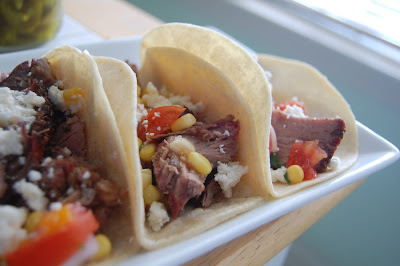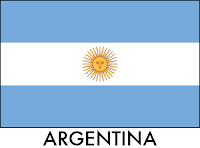I get a lot of e-mail from wine publicists, but this one hit just the right spot in the old cerebellum. "Would you like to try the Concannon Crimson & Clover?" Although the song was originally recorded by Tommy James and the Shondells, the version that I know and love is by
Joan Jett and the Blackhearts. The mere mention of the song takes me back to 1983. A roller skating rink in Southaven, MS, just south of my home in Whitehaven, a small surburb of Memphis. I've been eating popcorn. I've been playing the pinball machine that has some racy Boris Vallejo artwork. I'm wearing the cleanest white t-shirt I have because it looks so awesome when they turn on the blacklights.

Once an hour, they set aside a song for a couples' skate, which is pretty ridiculous when everyone is under the age of ten. Mom encourages me to skate with my cousin, and I refuse. Instead, I hang on the rail and watch while nervous boys and girls slowly turn left for three minutes and Joan Jett wails over the speakers. Shortly thereafter, we get some Van Halen and I'm getting some great bruises on my shins.
This wine isn't officially tied to the song: the crimson refers to the deep red of the wine, and the clover for the Irish heritage of the Concannon family. But while sipping it you'll hear that song in your head over and over.
2009 Concannon Crimson & Clover
Livermore Valley, California
$18, 13.7% abv.
50% Petite Sirah, 25% Cabernet Sauvignon, 15% Syrah, 10% Zinfandel
Great dark fruit, needs to breathe for a while. Dark, deep, concentrated and tannic. This is chomping a bunch of blackberries and then drinking some tea right afterwards. (Which I've done on many occasions. Ripping out invasive blackberries is a pain, but I'll help myself to any fruit that's ripe, and have often taken a break with unsweetened, bitter iced tea.) I think it's a great expression of Petite Sirah with some excellent supporting cast members.

I got to pair this with some fun stuff that I was playing with in the kitchen and backyard. When it comes to smoking beef, brisket is the king. But I've never successfully prepared a brisket worth serving to anyone who's not starving, and the size and shape of that cut can be problematic if you don't have a big smoker. I had a chuck roast in the freezer, but didn't want to make a roast or beef stew with it.
I covered the defrosted chunk of beef in Dijon mustard and spices, and then smoked it with fresh apple wood for three hours. Then an hour in the oven wrapped in foil, and after resting it was time for serving with the delightful corn salsa that I whipped up. (Garlic and orange bell peppers roasted on the grill, combined with fresh corn, diced shallots, fresh line juice, toasted cumin ground by hand in the mortar, fresh cilantro, diced tomatoes, and a dash of salt.)

To assemble the tacos I used the smoked beef (pulled, not chopped), and used white corn tortillas, the homemade corn salsa, some pickled jalapeños for flavor, and a few crumbles of cotija cheese. The combination of everything was amazing, and I was really happy with the way that it all turned out. Chuck roast is a hell of a lot easier than brisket to cook, and the flavor/mouthfeel is comparable. I've spoken to my father about this revelation, and we think that spreading the word could revolutionize backyard BBQ. If you do any smoking, grab a chuck roast and give it a shot. I think you'll be impressed with the results.
Note: This wine was received as a sample.
 Here's a couple of wines from Graffigna in Argentina. I've written recently about the Pinot Grigio, and my amusement at an Italian grape and an Italian name coming from Argentina. This really shouldn't be surprising, since there was a lot of Italian emigration to Argentina, and roughly 60% of Argentinians have some Italian heritage. Italian is the second most spoken language in the country after Spanish.
Here's a couple of wines from Graffigna in Argentina. I've written recently about the Pinot Grigio, and my amusement at an Italian grape and an Italian name coming from Argentina. This really shouldn't be surprising, since there was a lot of Italian emigration to Argentina, and roughly 60% of Argentinians have some Italian heritage. Italian is the second most spoken language in the country after Spanish.
 2010 Graffigna Pinot Grigio Reserve
2010 Graffigna Pinot Grigio Reserve





























